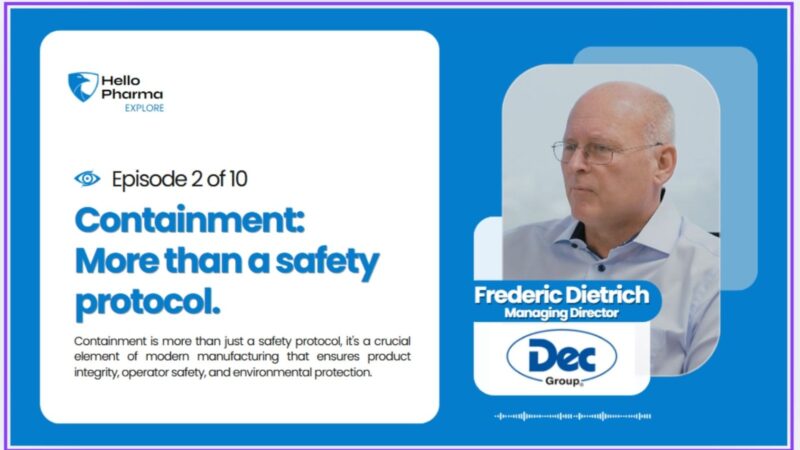Containment in pharmaceutical and chemical manufacturing has evolved from being a purely protective measure to an integral part of modern process design and operational excellence. In Episode 2, we explore how containment solutions have expanded in purpose and impact, shaping the handling of high-potency materials and complex processes.
Joining us again is Mr Frederic Dietrich, Managing Director of Dec Group, who shares insights into the multifaceted role of containment in today’s advanced manufacturing environments. While containment began as a strategy to shield operators from potentially hazardous powders, it has grown to encompass a range of performance-enhancing and quality-assuring capabilities.
The episode begins by discussing the historical context that drove the rise of containment systems. As the pharmaceutical and fine chemicals industries began working with increasingly potent active ingredients, concerns about operator safety and cross-contamination became paramount. Containment emerged as the solution to these challenges, providing physical and engineered barriers that protected both people and products.
We examine the core principles of containment, highlighting how technologies like isolators, downflow booths, and integrated transfer systems have transformed the handling of potent powders. These systems create controlled environments that maintain product purity while minimizing occupational exposure and environmental release. By using vacuum and pressure differentials, advanced containment solutions enable the gentle yet precise transfer of powders between process steps.
The discussion expands to consider the broader role of containment in ensuring product quality and regulatory compliance. Mr Dietrich explains how modern containment technologies help meet evolving standards, including those outlined in Good Manufacturing Practices (GMP) and the EU’s Annex 1 guidelines. Beyond safety, containment reduces the risks of cross-contamination, supports consistent product quality, and contributes to robust quality assurance practices.
Containment also plays a crucial role in optimizing efficiency. By reducing cleaning requirements and minimizing process downtime, these systems support higher productivity and faster scale-up for new formulations and therapies. Mr Dietrich highlights how these process benefits have made containment an essential element in the manufacturing of high-potency active pharmaceutical ingredients and complex biologic therapies.
Looking ahead, containment technologies continue to adapt to support new manufacturing paradigms such as continuous production and modular systems. Mr Dietrich discusses how containment can be designed for flexibility and integration with other process steps, ensuring compatibility with modern digital infrastructure and data-driven process control.
The episode concludes by reflecting on how containment has shifted from a passive safety feature to an active enabler of high-performance manufacturing. Today, it stands as a vital tool for meeting the dual challenges of operator protection and product integrity, forming the foundation for processes that are not only compliant, but also innovative and efficient.
Join us as we unpack the evolving role of containment in advanced manufacturing, setting the stage for deeper discussions in the next episodes. In Episode 3, we will address the question: why does continuous manufacturing still feel like a leap for so many companies?
For more pharma technology focussed content visit www.hello-pharma.com






